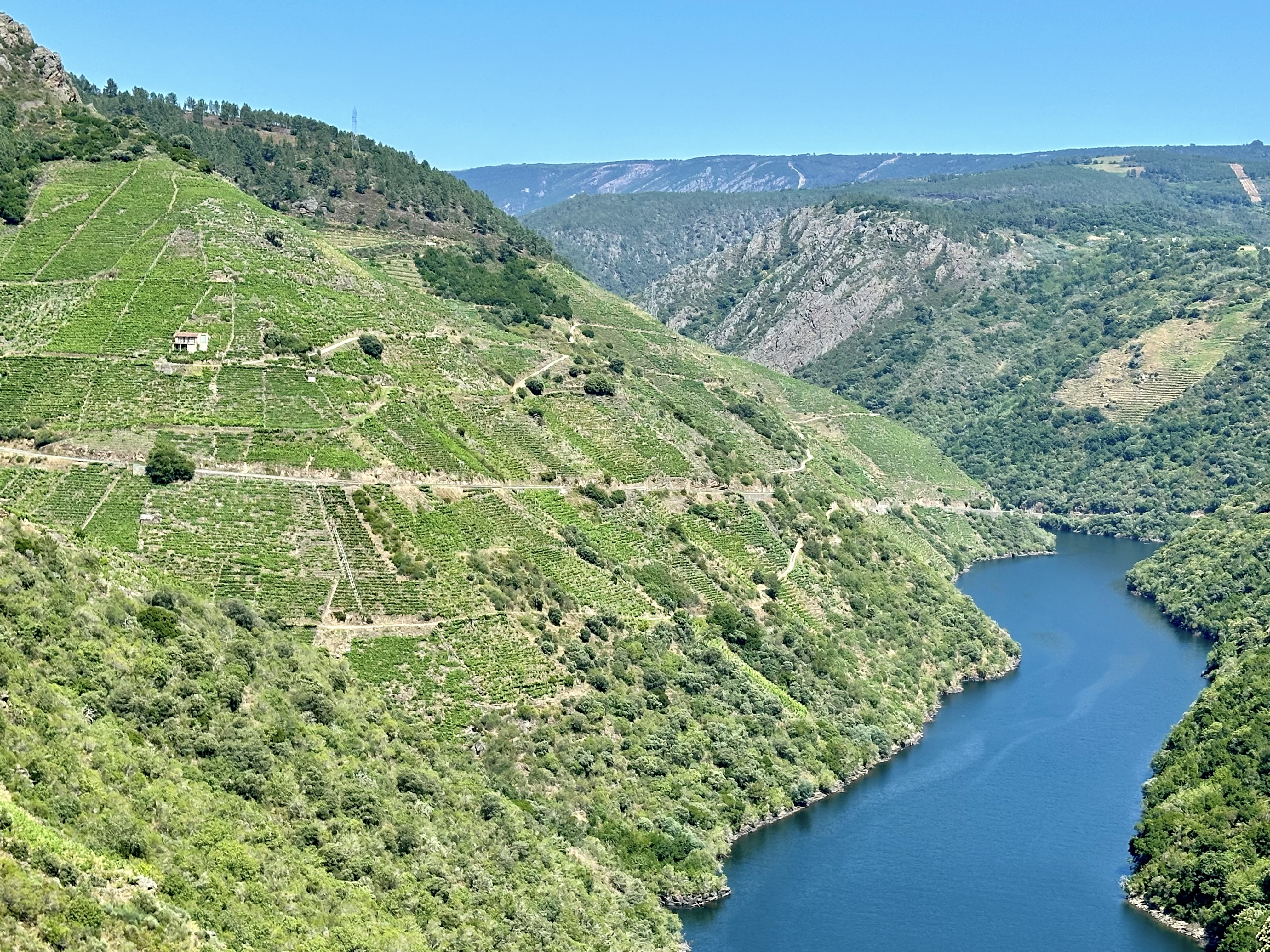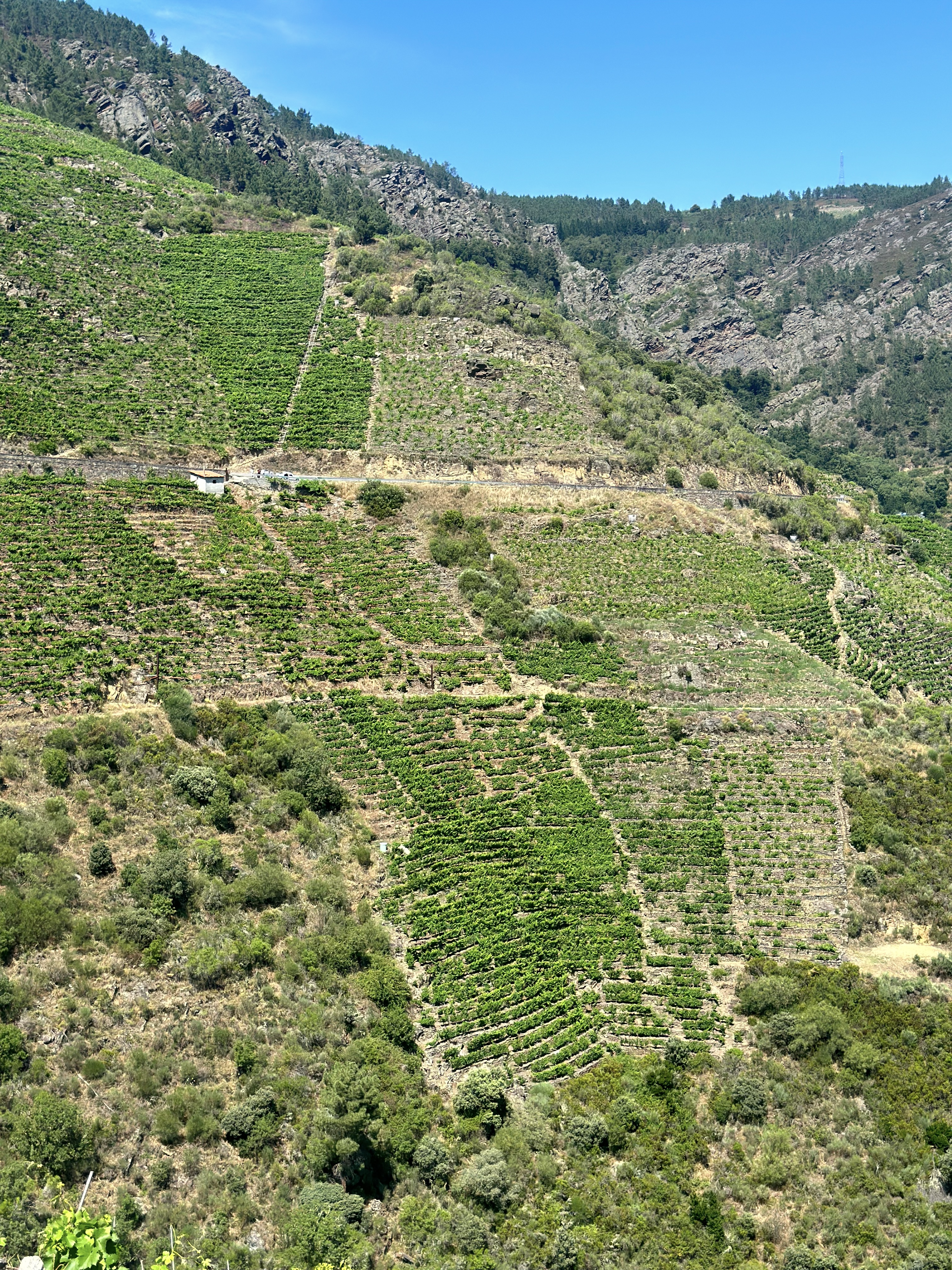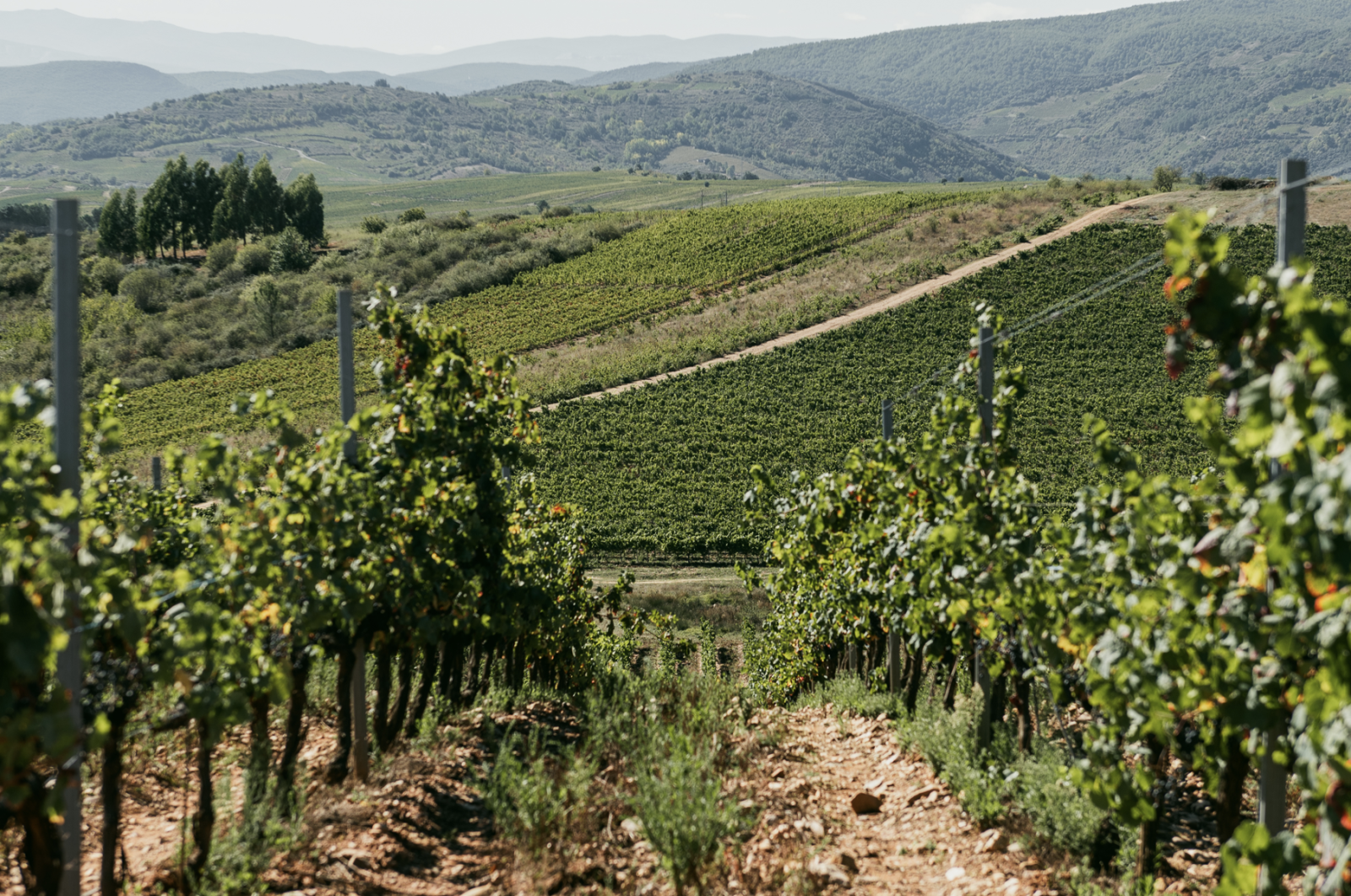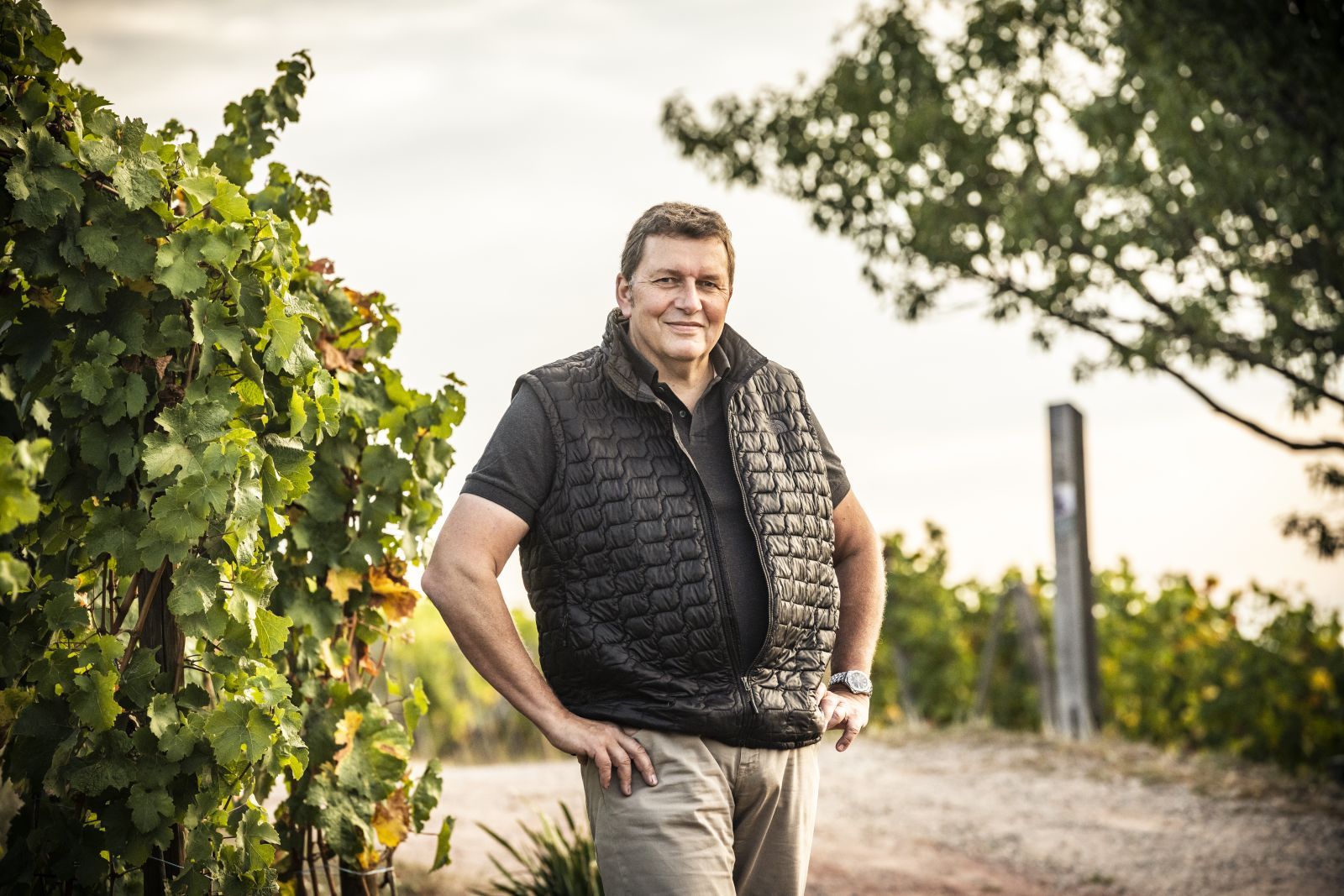BLOG
Ribeira Sacra— A Historic Region with Modern Problems
Noah Chichester
Regions and Producers
Nearly 30 years after gaining Denominación de Origen status, Galicia's most “heroic” wine region is facing some familiar challenges.
Ribeira Sacra is known mostly for its red wines made from Mencía, but the region’s real calling card is heroic viticulture. Here, steep slopes prevent mechanization in the vineyard, so all work is done by hand.

Today, Ribeira Sacra is reckoning with a global decline in red wine consumption and a lack of young people to continue the backbreaking viticultural work of the previous generations. Faced with overproduction and underconsumption, Ribeira Sacra was one of a handful of wine regions in Spain to apply for permission to distill excess wine in 2024, and some winemakers are considering grubbing up Mencía vines and replacing them with the more fashionable Godello.
But we shouldn't give up on Ribeira Sacra yet. A small new generation of winemakers is taking over. They’re working with traditional grapes, making innovative choices in the cellar, and working to slowly bring wine prices in line with the massive amount of work it takes to grow grapes on the unforgiving banks of the Miño and Sil.

At a Glance
Ribeira Sacra is located in central Galicia, in northwest Spain, and more or less follows the paths of the Miño and Sil rivers. The Miño begins in northern Galicia and flows south, where it’s joined by the Sil coming west from Castilla y León. Both rivers flow through canyons that were created millions of years ago when tectonic action wrenched the earth apart and created vast chasms.
Nearly a thousand years ago, monks came here, looking for a place undisturbed by the world to live out their lives of prayer and contemplation. They built cliffside monasteries and carved terraces out of the steep slopes that were planted with vines. Much later, an erroneous transcription would take its cue from the many monasteries lining the Miño and Sil and give the region the name by which it’s known today: Ribeira Sacra, or The Sacred Riverbank.
Historic Region, Modern Problems
You really have to see Ribeira Sacra to believe it. There’s something wild here, something different from the neat terraces of Côte Rôtie, with their Hollywood signs for Chapoutier and Guigal, or the bucolic Mosel. Ribeira Sacra’s terraces give a sense of timelessness: perched at one of many viewpoints, it’s easy to look around and imagine medieval people tending vines on the terraces below.
But this remote location has its drawbacks, too. A challenging economic landscape and an aging workforce are threatening the sustainability of traditional grape-growing practices. The average grower here is 65 years old, and it’s hard to find young people who want to live in a mostly rural area where a paycheck isn’t always guaranteed. A study by the Interprofesional del Vino de España found that the cost per kilo to grow grapes in Ribeira Sacra is €1.20, which is also the maximum price wineries will pay for top quality Mencía. For most, the prospect of a year’s work of painstaking manual labor in return for barely breaking even is not appealing.
On top of that, a post-pandemic drop in red wine sales has created a surplus of wine, which in turn has led to lower demand and the cessation of contracts between wineries and the growers who supply them. This year, over one million kilos of grapes could go unharvested due to lack of demand. If this situation repeats itself, many aging growers might just throw in the towel completely.

A Future Generation Takes the Lead
So where does that leave Ribeira Sacra? Luckily, the full picture isn’t so bleak. To understand what the future could be like, we can look to the example of wineries that have given a new generation a reason to stay.
A group of young winemakers has taken the helm of their family wineries and is hoping to steer them to success by investing in native grapes and terroir-specific winemaking. Father and son duo Fernando and Fabio González of Adega Algueira have worked to isolate and vinify their best plots, and they’ve made single varietal wines from grapes like Brancellao and Merenzao to great success. Instead of having to leave for the rest of Spain and beyond, like so many other people of his generation, Fabio has a reason to stay.
At Abadía da Cova, thirty-somethings Paloma, José, and Adrian Moure are the third generation at the helm of the winery. Their focus is on maintaining their entry-level wines while recovering old plots using regenerative agriculture. Similarly, Pedro Rodríguez of Guímaro balances between the Mencía everyone expects from a winery in Ribeira Sacra and smaller, terroir-focused bottlings. The top wines of Algueira, Abadía da Cova, and Guimaro are the group’s attempt to show a different side of Ribeira Sacra—one where the price matches the intense labor that goes into maintaining countless stone terraces and manually tending to old vines.

What is arguably the most famous winery from this region isn’t even in the D.O. Envínate chose to make wine outside of D.O. Ribeira Sacra and promote their understanding of Ribeira Sacra as a region, without the restrictions of the Denominación de Origen. Others, like Xabi Seoane of Fazenda Agricola Prádio, are working just as hard to show that you can make wines of international renown and sell them for what they’re worth without the need for a D.O. back label.
Time will tell if red wine will become trendy again, and it’s anyone’s guess as to whether wineries will be able to sell the excess wine from their stocks. But looking at Ribeira Sacra’s success stories the path forward is clear. It involves intentional winemaking, focusing on terroir over grape variety. The future will depend on stemming the region’s population loss by making grape growing and winemaking economically feasible and moving into an international marketplace where wine lovers are willing to pay top dollar to capture some of the magic that permeates every inch of the “Sacred Riverbank.”




